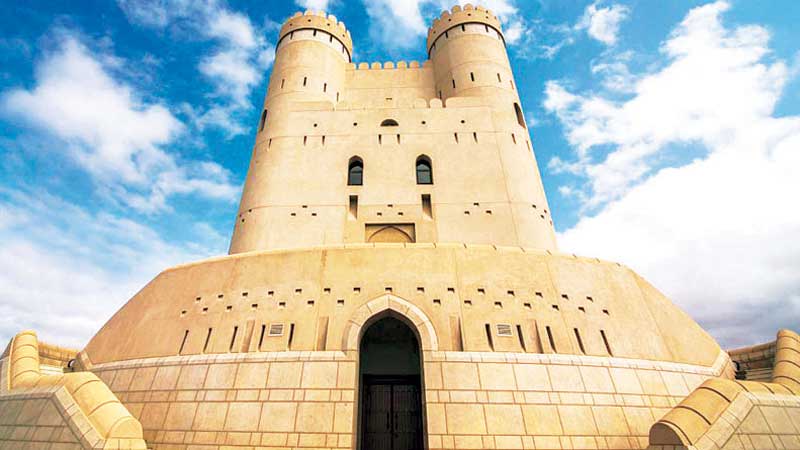


Like pearls in a necklace, 61 wilayats adorn the Sultanate with its unique customs, traditions and legacy. Starting with Bahla, Observer is taking readers to a tour of these wilayats of the Sultanate to reveal the march of development and progress. It is a time travel as we offer glimpses of its colourful past and a peek into the promising future as Sultanate celebrates 50th National Day on November 18.
Staff Reporter
Muscat, Oct 31
Bahla is one of the oldest wilayat in the Sultanate, which is known for its ancient heritage and is home to landmarks that plumb the depths of the Omani civilisation.
Bahla has one of the oldest fortresses in the country; the 13th century Bahla Fort, which is now a Unesco World Heritage site.
The fortress and the town are enclosed by extensive remnants of a 12 km long fortified wall. Most buildings are constructed of traditional mud brick, many of them are hundreds of years old.
A short distance beyond Bahla lies the Jabreen fort, a massive three-storey structure built during Al Yaruba dynasty in the mid 17th century. The castle is a fine example of Islamic architecture with beautiful wooden inscriptions and paintings on its ceilings.
The Gate of Bahla is considered one of the most prominent landmarks that give an aesthetic touch to the entrance of the wilayat. The gate overlooks the entrance to the wilayat and is directly opposite Bahla Castle.
The gate, along with its unique design inspired by Omani heritage mixed with Arab engineering creativity, rises to 23 metres. It consists of four floors and service facilities such as restrooms, restaurant, museum, lounge for visitors and a reception hall.
Despite fierce competition from machine-made imports, the ancient business of traditional weaving, pottery and metalwork is still thriving in the inner towns of the Sultanate. One such place is Bahla. The wilayat in the Governorate of Al Dakhiliyah is famous for many traditional industries and handicrafts that the people of the wilayat still hold as part of their cultural heritage.
One of the most prominent traditional industries is pottery and the Wilayat of Bahla has been its centre. The first pottery industry found in the Sultanate dates back to the beginning of the third millennium BC.
The pottery industry in Bahla has been very popular since ancient times. The Bahla Oasis is one of the main centres of this industry. Archaeologists have identified a special method known as “Bahla pottery method” to differentiate it from other pottery in the Sultanate, whether local or imported.
In order to preserve and pay attention to this craft, the government has established a special centre for the training and production of pottery and ceramic in Bahla.
The wilayat has many ancient neighbourhoods with their well-established buildings and traditional architecture characterised by simple construction and use of local materials.
Among the old neighbourhoods in the wilayat is Harat Al Nadwa. It is located in the centre of the wilayat on the west side of the famous Bahla Castle.
Harat Al Nadwa was a major centre of the textile industry in the wilayat as the people of the Harat Al Nadwa were famous for the textile industry through the spinning of yarn and wool.
Oman Observer is now on the WhatsApp channel. Click here



